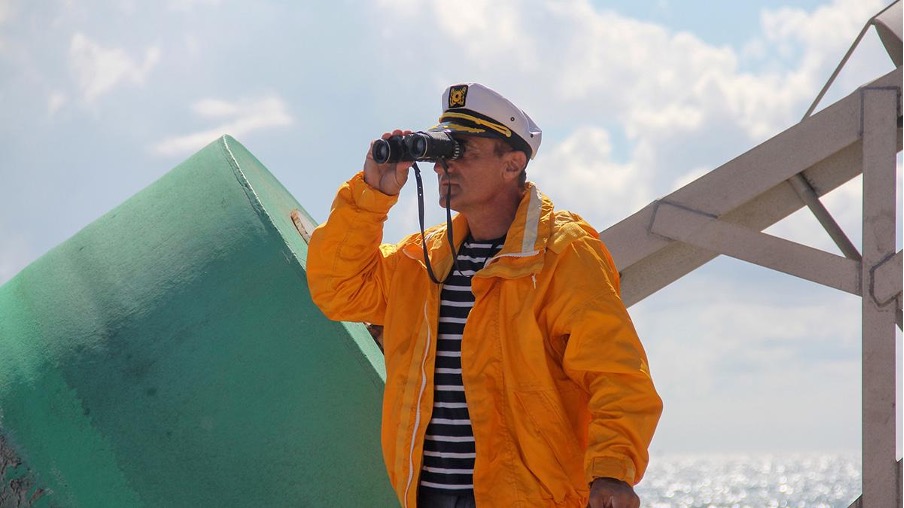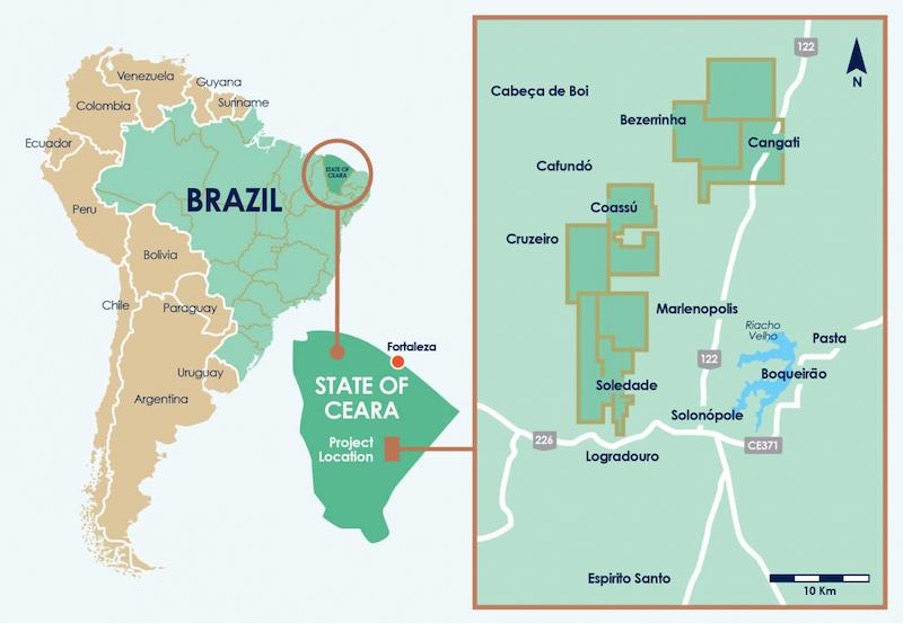IPO Oceana Lithium sets sights on Brazilian mineral bounty

Pic: Marie LaFauci/Moment via Getty Images.
In the booming battery metal space, outcropping lithium-hosting pegmatites are an explorer’s dream. When Oceana Lithium lists this week, it will do so with around 17km of intermittent mineralised Pegmatite outcrop already mapped.
The potential of Oceana’s (ASX:OCN) flagship Solonopole project, relatively untouched and spanning 114km2 of ground in the northern Brazilian state of Ceara, is enough to excite even the wiliest lithium exploration veterans.
Case in point is Oceana executive director Sebastian Kneer – once the geology manager at Galaxy Resources, where he managed all hard rock lithium exploration and resource development in Australia and Canada.
Yes, that Galaxy Resources. The one which merged with Orocobre, since renamed Allkem Ltd (ASX:AKE) last year, to create the world’s fifth-largest lithium chemicals company worth $4bn at the time (now $6.8 billion).
It’s fair to say Kneer knows what he’s doing when it comes to lithium. And on that basis, he sees great potential at Solonopole.
“We’ve got a lot of pegmatites outcropping on our project, and we know the mineralisation is there,” he said.
“We’ve got high-grade lithium sampling results already, combined with tin, niobium, tantalum. And what excites me is that there is no record of them ever been drill tested yet.
“As a geologist, you look at this project and you’ve got all of this surface mineralisation which has never been explored at depth.
“That’s obviously extremely encouraging.”
The rigs may never have hit the ground at Solonopole, but that’s not to say the project’s mineralisation is a secret. The area is scattered with over 20 historic artisanal mines from the 1970s and ‘80s – another clear sign of its potential.
“These small-scale artisanal miners were only able to go down about 10 metres vertically before they couldn’t go any further,” Kneer said.
“They mainly mined pegmatite hosted lithium mineralisation (amblygonite, lepidolite and spodumene), together with columbite-tantalite (sources of tantalum and niobium) and beryl.
“It all lines up with the exceptional assay results received from surface sampling programs.”

Early mapping in follow up of previous, wide-spaced work is scheduled to begin at Solonopole imminently, with a view to guiding the first drill holes ever carried out at the project.
Kneer is not the only exploration veteran attracted to the lucrative allure of Solonopole. The board also features geologist and Brazil resident Simon Mottram as a non-executive director, adding 28 years’ experience with base and precious metals and invaluable local insight, connections, and knowledge.
The Galaxy connection continues through non-executive director Dr Qingtao Zeng, a prominent Australian lithium industry figure who was once instrumental in assisting the lithium producer to market its spodumene concentrates to sellers abroad, and has extensive knowledge of offtake product desires.
Dr Zeng is also heavily involved in the Northern Arunta pegmatite province of the Northern Territory, where Oceana’s secondary, 1160km2 Napperby lithium project is located.
Rounding out the board is chairman Gino Vitale, with more than 30 years’ experience in operational, investment banking and advisory roles within the industry.
Senior management includes Brian Talbot – once GM of Galaxy’s Mt Cattlin mine, where he increased production to above nameplate design and patented a new brine process for lithium extraction to produce battery-grade carbonate.
Talbot is also an advisor to +US$1 billion market cap Nasdaq-listed Sigma Lithium, which is developing the Grota do Cirilo deposit in the Brazilian state of Minas Gerias.
It’s little wonder the Oceana IPO was in such demand, closing heavily oversubscribed to raise around $6 million, with a significant foundation investment from Tesla chemical supplier Ya Hua International.
The company will list on Friday 1 July, among the first in the new financial year, with immediate work to be carried out in both Brazil and the Northern Territory.
State of action
Ceara may be home to artisanal mines, but the government in the northern state of Brazil has recently demonstrated a strong commitment to getting industry up and running on a broader scale.
The mining conversation in Brazil has generally centred on the states in the south. That rhetoric is beginning to change, as Ceara recognises the potential of industry largely untapped.

In July last year, Andrew Forrest’s Fortescue Future Industries signed an MoU with the state’s government to assess the opportunity to develop large-scale hydrogen-based green industrial projects there.
The capital of Fortaleza – home to around 2.6 million people – is home to a major port recently expanded on the back of +$200 million worth of state government investment.
Kneer said these factors demonstrated a support for the development of a larger-scale minerals sector than had ever been seen in Ceara before.
“The government is showing a lot of support for lithium right now, because lithium is no longer a niche industry.
“It used to be a niche, in the shadows a little bit. But now, major companies are looking at lithium in Brazil – the times are changing.”
Marking Territory
While Solonopole is the flagship, Oceana also intends to hit the ground running at Napperby in the NT, where lithium-cesium-tantalum pegmatites have been identified by the NT Geological Survey back in 2005.
Early field inspection work has confirmed pegmatite outcropping, while tantalum and tin have previously been produced from the area.
It’s a larger tenement than the Brazilian holdings, and Kneer said early work would be focused on honing in closer to potential targets.

“In the NT, we’ll be mapping and sampling, but we’re also waiting for quotation for an airborne survey,” he said.
“That should allow us to map the outcrop a bit further so we can then, via minerals identified, narrow things down to where we want to send teams to do more detailed ground checks and sampling.
“We’ve got a team going out there in a few weeks’ time. Dr Zeng is going to help us coordinate the NT work because he’s got access to a team that’s done some work on other projects in the area.
“We really are looking forward to getting out and working on both projects at the same time, with minimal fuss.”
This article was developed in collaboration with Oceana Lithium, a Stockhead advertiser at the time of publishing.
This article does not constitute financial product advice. You should consider obtaining independent advice before making any financial decisions.
Related Topics

UNLOCK INSIGHTS
Discover the untold stories of emerging ASX stocks.
Daily news and expert analysis, it's free to subscribe.
By proceeding, you confirm you understand that we handle personal information in accordance with our Privacy Policy.








